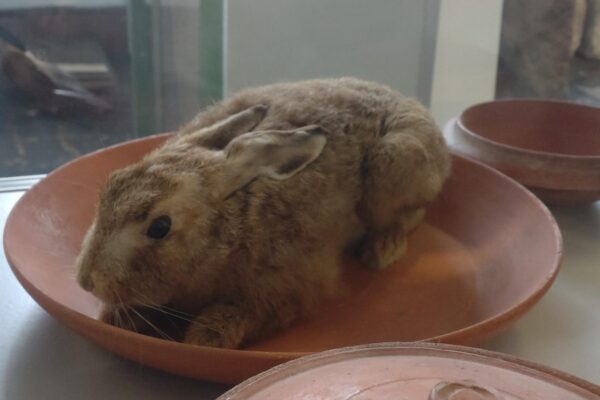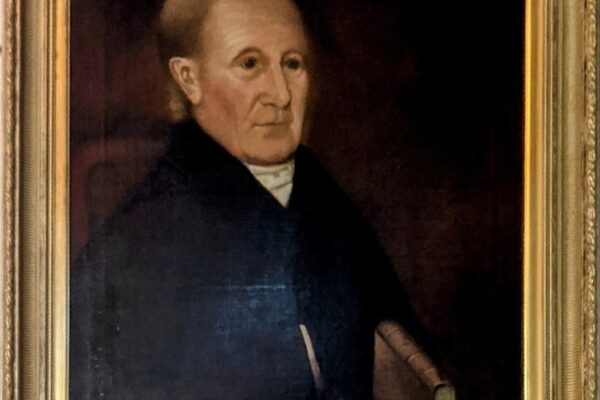Object of the Month: Chatelaine
A Chatelaine is an ornament which was used by both men and women and usually fastened to a belt or pocket, with chains bearing hooks on which to hang small articles such as watches, keys, seals, writing tablets, scissors, and purses. The word chatelaine is derived from a word meaning the
Object of the Month: European Rabbit
Rabbits in Britain Rabbits live in large groups in underground burrow systems known as ‘warrens’. Female rabbits, called ‘does’ produce one litter of between three and seven babies called ‘kittens’ every month during the breeding season. Rabbits can be popular among predators such as stoats, buzzards, polecats and red foxes,
Object of the Month: Oil painting of James Fawcett
The man depicted in this oil painting was called James Fawcett. He was born in 1785 and became a police constable for Kirkland in 1820. He was a constable in the Kendal Borough Police force. He later became the Governor of the House of Correction in Kendal in 1824 and
Object of the Month: Brown Bear
Bears in England have a complicated history. There are limited resources archaeologists have access to, as there is little physical evidence found in bogs, forests and rivers. The University of Nottingham released a research project in 2018 to gain a deeper insight into the reasons for the bear’s mysterious disappearance
Object of the Month: Wainwright Collection
ALFRED WAINWRIGHT AND HIS PICTORIAL GUIDE BOOKS. November 9th 1952 saw Wainwright start work on the first of seven guidebooks to the Lakeland Fells, each covering a defined area. It was intended to be a purely pleasurable task, a gathering together of all the notes and drawings that he had
Object of the Month: Mummified Hawk
The Hawk was the guardian of the king, and was sacred to the god Horus. The Egyptians used mummified hawks as votive offerings to Horus at his shrines. Mummification Mummification is synonymous with Ancient Egypt; it was one of the most distinguishing features of this ancient culture and has fascinated
Object of the Month: Statue of Bacchus
Bacchus was the Roman god of fertility, festivals and wine. Often portrayed languishing against a tree trunk that supports a fruiting grape vine, he is sometimes found holding an empty cantharus (wine cup), signifying a successful party or festival. He is also usually portrayed naked to display his youthfulness and
Object of the Month: Brain coral
This month, our Curator of Collections, Carol Davies, talks about “Brain Coral”. This specimen of ‘Brain coral’ (Maeandropora sp) was part of the old Kendal Museum collection in the early 1900’s and had been presented by the Hon. Mrs Howard of Levens Hall, from the old museum in Stricklandgate c1913. Its
Object of the Week: Grocer’s Bike
This Grocer’s bicycle is a Safety bicycle modified with a basket holder at the front. The first successful Safety bicycle, called the Rover, was invented in 1885 by John Kemp Starley. They possessed a few features that distinguished them from earlier bicycles: with most Safety bikes having equal sized wheels
Object of the Week: Helsfell Wolf
Kendal Museum’s Helsfell wolf skeleton was excavated in 1880 by John Beecham a local archaeology enthusiast who lived in Kendal. Beecham wanted the specimens he discovered to be placed in the care of Kendal Museum. The skeleton has been displayed in Kendal Museum for over 100 years. The Helsfell Wolf











